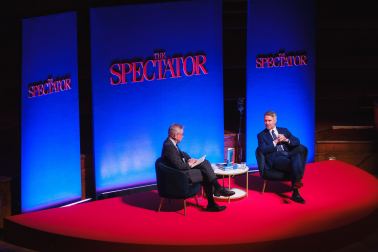Whether it’s Coleridge’s nightingale or Petrarch’s, Ted Hughes’s wren or Shelley’s skylark, Helen Macdonald’s hawk or Max Porter’s crow, literature is measured out in warbles and wingbeats — metaphors that have long since broken free of their originals, birds made not of sinew and bone but ‘ink and sentiment’. Richard Smyth’s A Sweet, Wild Note brings these black and white creatures back into colour, gives them science and geography, acoustics and ecology as well as poetry, bringing all these disciplines to bear on one question: what do we really hear when we hear birds sing?
Birdsong is to ornithology as that lump in your throat when you hear Barber’s Adagio is to musicology, or Proust’s madeleine is to cookery. The sum of parts doesn’t even come close. There’s an episode in A Sweet, Wild Note where Smyth visits Leeds University to dissect a partridge. He finds ‘a hollow nub of gristle, no bigger than a broad bean’ – the syrinx, a bird’s dual voice-box, source of all that sound and sentiment. His book is an attempt to fill in the gulf between that and the birdsong we create in our art and our imaginations, ‘the places where birdsong and human culture overlap’.
A self-confessed ‘birdsong sceptic’, Smyth is no zealot. A keen birdwatcher (rather, crucially, than a ‘birder’ or ‘twitcher’, whose monomaniacal passion he views as ‘somewhere between an alternative lifestyle choice and an untreated neurosis’), he’s a guide with a lively sense of the absurd, a wryly precise prose style and an appropriately magpie-like curiosity for his subject. There’s a wonderful democracy of reference to a book that draws on Radiohead and The Simpsons as well as Messiaen and Duchamp; that considers East End bird-catching alongside the Romantics and current bioacoustics research.








Comments
Join the debate for just £1 a month
Be part of the conversation with other Spectator readers by getting your first three months for £3.
UNLOCK ACCESS Just £1 a monthAlready a subscriber? Log in